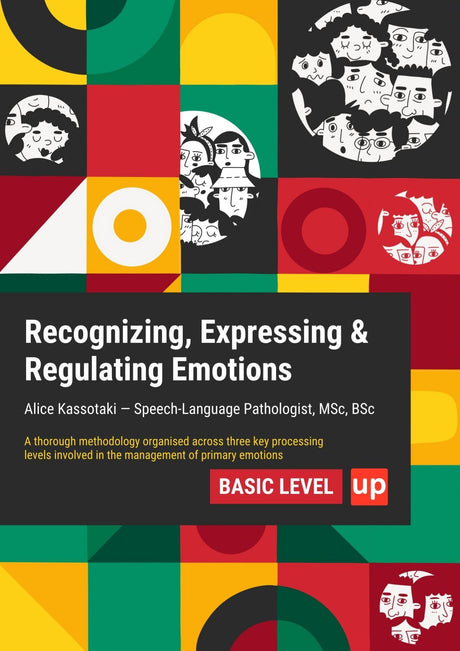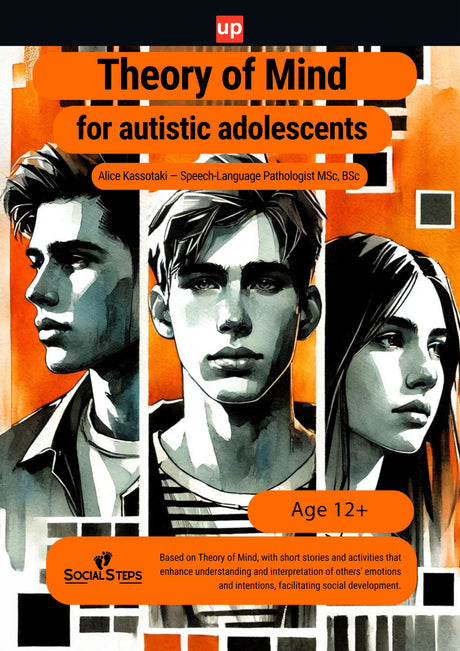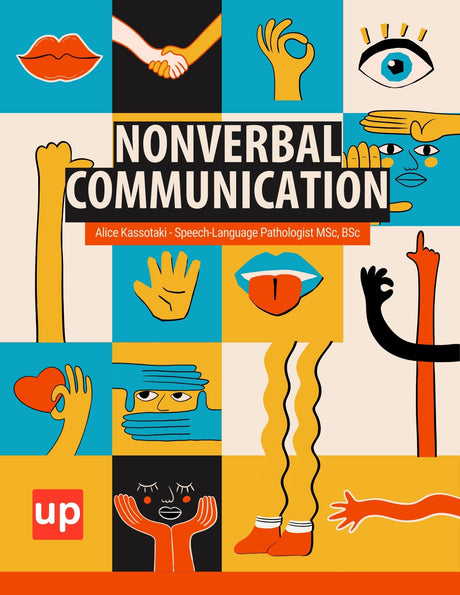Preschool is more than just learning letters and numbers; it's a foundational experience where young students learn how to navigate a social world. For many children, this is their first time in a group setting, making the development of social skills paramount. The Social Thinking framework moves beyond simply correcting behaviors and instead teaches the "why" behind social rules. This practical guide will equip you with strategies to integrate Social Thinking concepts into your curriculum, empowering every child in your classroom to become a more effective social learner.
Key Points
- Social Thinking gives preschoolers a concrete, shared language (e.g., “expected vs. unexpected,” “flexible brain,” “thinking with your eyes”) to understand the why behind social rules and navigate group settings.
- Embedding visuals, predictable routines, and in-the-moment coaching across daily activities (circle, play, snack, transitions) builds perspective-taking, self-regulation, and cooperative play.
- Adapting strategies (explicit teaching, visual cues, calm corners) ensures inclusion for diverse learners, including autistic children, while strengthening classroom community and SEL outcomes.
Introduction: Why Social Thinking Matters for Your Youngest Learners
At its core, Social Thinking is the process of understanding our own and others' thoughts, feelings, and intentions to navigate social situations effectively. For preschoolers, whose brains are rapidly developing social and emotional pathways, this learning is critical. Integrating this framework isn't about adding another task to your day; it's about shifting your approach to enhance the Social Emotional Learning (SEL) that already happens. By teaching these foundational skills, you support not only positive classroom behaviors but also set students up for future academic and life success. This approach fosters a positive school community where every child feels understood and equipped to interact successfully with their peers.
Laying the Groundwork: Key Social Thinking Concepts for Preschoolers
Before implementing specific activities, it's essential to understand the core social learning concepts that form the foundation of Social Thinking for young learners. These ideas provide a common language and a framework for all social learning, making abstract social expectations concrete and understandable for children ages 3-5. Introducing these social concepts early and consistently is key to building a classroom culture of social awareness.
Understanding Expected vs. Unexpected Behaviors

Expected behaviors help the group feel calm and comfortable, while unexpected behaviors can make others feel confused or upset.
This core concept helps children understand social norms in any given situation. "Expected behaviors" are those that make others feel comfortable, calm, and happy, like sharing blocks or using a quiet voice during story time. "Unexpected behaviors" make others feel confused, uncomfortable, or sad, like grabbing a toy or yelling inside.
Focusing on this distinction, rather than "good" or "bad," removes judgment and empowers students to become social detectives. It shifts the focus from adult compliance to the impact of one's actions on the group. You can explain, "When you walk with quiet feet in the hall, that is expected. It helps everyone in the school stay calm and focused." This approach encourages a positive pattern of behavior by tying actions to their social outcomes.
Flexible Thinking vs. Stuck Thinking: Navigating Change
Preschoolers often struggle with changes in routine or when things don't go their way. This is where the concept of Flexible Thinking becomes a cornerstone skill. "Flexible Thinking" is the ability to adapt to new plans, accept that it's okay for things to change, and solve small problems. The opposite is "Stuck Thinking," which is getting fixated on one idea and resisting any deviation from the original plan.
You can introduce this by saying, "Our brains can be flexible! We were going to the playground, but it's raining. Our flexible brains can think of a new, fun indoor activity!" Fostering flexibility with preschool students helps them develop resilience and problem-solving abilities, which are crucial for managing disappointment and navigating the social world successfully.
Thinking About Others: Introducing Perspective Taking
This is a cornerstone of Social Thinking. For preschoolers, it begins with the simple realization that others have their own thoughts and feelings, separate from their own. Use simple, direct language to introduce this idea: "When you took the toy, how do you think it made Sarah's mind and body feel?" or "Look at Liam's face. What do you think he is thinking right now?"
This encourages emotional awareness and helps students consider the social intent behind actions. By understanding that their behaviors affect how others feel, students begin to develop empathy and build stronger "social minds." This foundational understanding is vital for relationship building, collaborative play, and navigating any social situation they will encounter throughout their lives.
Crafting Your Social Thinking Classroom Environment
The physical and emotional environment of your classroom plays a crucial role in supporting social learning. A well-designed preschool setting provides the structure, visual cues, and emotional resources students need to practice these new skills safely and effectively. Your classroom can become a silent partner in teaching social competencies.
Designing Spaces for Social Learning
Organize your classroom setting to naturally encourage collaborative interactions. Create a cozy reading nook for pairs to share a book, a large carpet area for group activities, and building zones where students must share materials and negotiate plans. In these different settings, students naturally encounter social situations that require teamwork, turn-taking, and communication. The dramatic play area, for instance, is a prime location for children to practice perspective-taking by acting out different roles. The physical layout of your classroom can be intentionally designed to be a silent partner in your social skills curriculum.
Visual Supports: Pictures, Schedules, and Feelings Charts
For young learners, visual supports make abstract social concepts concrete and understandable. They are an invaluable helpful resource for all students, regardless of their verbal skill level.
- Visual Schedules: Use pictures to show the flow of the day (e.g., First circle time, then snack). This reduces anxiety around transitions by making the day predictable.
- Feelings Charts: Display pictures of children expressing different emotions (happy, sad, angry, surprised). This serves as a critical emotional resource, giving students the vocabulary to identify their own feelings and recognize them in others.
- Mini-Social Stories: Use simple pictures to illustrate how to perform a social skill, like asking a friend to play or taking turns with a toy.
These supports create a common language that is accessible to all learners and are especially beneficial for children with social learning differences.
Establishing a Common Language: Social Thinking Vocabulary in Action
Consistently use the Social Thinking Vocabulary throughout the school day. Simple, kid-friendly phrases should become part of your classroom lexicon. This helps build a shared social language that makes complex social interactions easier to understand.
Key phrases include:
- "Body in the group": Referring to keeping one's body oriented toward the group activity.
- "Thinking with your eyes": Reminding students to look at a person or situation to figure out what is happening.
- "Flexible thinking" / "Flexible brain": Praising adaptability.
- "Group plan": Highlighting what the group as a whole is doing.
Building this common vocabulary helps children quickly understand social expectations and provides a simple, effective way to coach them without placing blame.
Consistent Routines and Transitions: Supporting Executive Functions
Predictable routines are essential for supporting students' developing executive functioning skills, such as working memory and self-control. When children know what to expect, their cognitive load is reduced, freeing up their brains to focus on academic learning and social engagement. Smooth, well-planned transitions minimize stress for both students and teachers. Your instructional decisions about the flow of the school day directly impact a child's ability to manage their attention, behavior, and emotions. Using a song, a visual timer, or a specific routine for cleanup can make transitions a moment for learning, not chaos.
Bringing Social Thinking to Life: Daily Strategies and Activities

Integrating Social Thinking into your daily practice is where the concepts become tangible skills. This doesn't require a complete curriculum overhaul but rather a thoughtful infusion of social learning into the routines and activities you already have in place. The goal is to make social thinking a visible and practiced part of every school day.
"Social Detective" Games and Activities
Turn students into "Social Detectives" who look for social clues in their environment. This playful approach builds social observation skills and makes learning about social norms fun. A key detective tool you can teach is Whole body listening. Explain that detectives use their whole body to gather clues: eyes watching, ears listening, body quiet, and brain thinking about what's happening.
During a read-aloud, pause and ask, "Look at the character's face. What clue does that give us about how they are feeling?" This type of activity transforms simple comprehension activities into social problem-solving tasks. Incorporate movement activities where students practice being part of a group, such as following a leader or moving together as a "team," noticing how their bodies affect the group's movement.
Integrating Social Thinking into Everyday Routines
Weave practical strategies and in-the-moment coaching into every part of the school day. These authentic opportunities are often the most powerful moments for classroom learning because they connect social development directly to a child's lived experience.
- Snack Time: Talk about the "group plan" (e.g., "Our group plan is to eat our own snack and stay at the table").
- Free Play: When a disagreement arises, act as a social coach. Help students navigate the conflict by asking, "What's the problem? What do you think your friend is thinking? What's a flexible idea we can try?"
- Circle Time: When a child shares a story, remind others to "think about their friend" by listening with their whole body.
Nurturing Emotional Awareness and Self-Regulation
A key goal of any Social Thinking-informed practice is to help students understand the connection between their feelings, their behaviors, and the impact they have on others. This empowers them with the tools they need for emotional self-regulation, a critical skill for school and life.
Understanding the Impact of Our Behaviors and Feelings on Others
Explicitly teach children that their behaviors cause others to have thoughts and feelings. Use simple, cause-and-effect language: "When you use a kind voice, it makes your friend feel happy. That is an expected outcome." This helps them move beyond thinking about rules and instead focus on their role within a social dynamic. After a challenging social situation, take time to reflect with the students involved. Guide them to see how their decision to act in a certain way led to a specific reaction from a peer, helping them to make more responsible social decisions in the future.
Simple Strategies for Self-Regulation: Brain Breaks and Calm Spaces
Teach students practical strategies to manage their big feelings and reduce their stress level. It is crucial to teach these strategies proactively, when students are calm.
- Brain Breaks: Incorporate short bursts of physical activity throughout the day. Activities like animal walks, stretching, or dancing to a song can help regulate the nervous system, improve attention, and reset focus.
- Calm-Down Corner: Designate a cozy, safe space in the classroom where students can go when they feel overwhelmed. This is not a time-out area but a positive emotional resource they can choose to use. Stock it with pillows, quiet sensory tools, and books about feelings to empower them to take ownership of their emotional regulation.
Adapting Strategies for Diverse Learners and Specific Needs

The Social Thinking framework is not a one-size-fits-all curriculum. Its greatest strength lies in its adaptability to meet the unique needs of every student in your classroom, creating a truly inclusive learning environment where all children can grow their social competencies.
Individualizing for Social Learning Differences
Recognize that students will have varying social learning differences and skill levels. Some children may have specific skill deficits that require more direct, individualized instruction. For students on the autism spectrum, the explicit, concrete, and visual nature of these strategies is particularly effective. Teaching social concepts directly can help bridge the gap for children with autism spectrum disorder who may not intuit social rules as easily as their peers.
For a child struggling with personal space, you might use visual cues like a carpet square or a hula hoop. For a child who has difficulty joining play, you can role-play the steps with them one-on-one. The goal is always to provide the right level of support to help each child grow from their current skill level.
Sustaining Your Social Thinking Classroom: Teacher Tips and Best Practices
Implementing these strategies is an ongoing journey, not a one-time lesson. Your role as a facilitator, model, and lifelong learner is crucial to the program's success and to the creation of a thriving, socially aware classroom culture.
The Teacher as a Social Thinking Model
Your own experience and modeling are the most powerful teaching tools you have. When you make a mistake, model flexible thinking aloud by saying, "Oops, that didn't work as I planned. Time for Plan B!" When you are trying to understand a child's behavior, narrate your process: "I'm thinking with my eyes and I see you have your arms crossed. I'm wondering if you are feeling frustrated." Your ability to narrate your own social thought process helps build strong relationships and shows students that everyone—even adults—uses their social minds to navigate the day.
Communicating Social Goals and Progress
Create a cohesive team by working closely with families and support staff to set and communicate social goals for students. Collaborate with specialists like a Resource Teacher or special education teacher to ensure everyone is using consistent language and strategies. Share the common vocabulary you are using in the classroom so it can be reinforced at home. Regular communication about progress in developing communication skills and building relationships creates a strong partnership, fostering a supportive school community that envelops the child and promotes their social and emotional growth.
Continuing Your Own Social Thinking Journey
Effective implementation of the Social Thinking Methodology requires ongoing learning. Seek out professional development opportunities, read books by founders like Michelle Garcia Winner, and collaborate with colleagues to share successes and challenges. Continuing education is at the core of growing as an educator. Remember that building these social competencies in young learners aligns directly with the foundational goals of early education standards that pave the way for meeting Common Core benchmarks in later grades. The more you deepen your own understanding, the more effectively you can support your students' development.
Conclusion: Empowering Socially Intelligent Preschoolers
Implementing Social Thinking strategies in your preschool classroom is a transformative process that nurtures emotionally intelligent, flexible, and empathetic learners. By embedding concepts like expected behaviors, perspective-taking, and self-regulation into your daily routines, you do more than manage your classroom—you equip students with essential life skills. You are teaching them foundational communication skills that will serve them for a lifetime.
Start by introducing one or two core concepts and consistently using a common vocabulary. Utilize visual supports and leverage everyday activities as powerful, teachable moments. By making social learning an intentional and integrated part of your curriculum, you empower your youngest students to build a strong foundation for a lifetime of positive relationships and successful learning experiences.
Frequently Asked Questions (FAQ)
What is Social Thinking and why is it useful in preschool?
Social Thinking is a framework that teaches children to understand their own and others’ thoughts, feelings, and intentions so they can act in socially effective ways. In preschool, it turns abstract social rules into kid-friendly, teachable concepts woven into daily routines.
How is this different from traditional behavior management?
Instead of focusing on compliance (“good/bad”), Social Thinking emphasizes impact (“expected/unexpected”) and the why behind behaviors. This builds internal understanding, empathy, and generalization across settings.
Which core concepts should I introduce first?
Start with “expected vs. unexpected,” “group plan,” “body in the group,” “thinking with your eyes,” and “flexible vs. stuck thinking.” Use these phrases consistently during circle, centers, and transitions.
What classroom structures support Social Thinking?
Predictable schedules, visual timers, feelings charts, clear zones for small-group and dramatic play, and a calm-down corner all support social learning, self-regulation, and smoother transitions.
How do I teach perspective-taking to 3–5 year-olds?
Use simple questions tied to real moments: “What do you think your friend is thinking?” “How might their body/face be feeling?” Pair with picture books, puppets, and role-play.
How can I embed Social Thinking without adding a new block to the day?
Narrate social thinking during what you already do: snack (“our group plan is to sit and eat our own food”), clean-up (“use flexible brain—we’re switching activities”), and free play (coach turn-taking and problem-solving).
What are effective strategies for self-regulation?
Teach proactive “brain breaks,” breathing, and use of a calm space. Practice when students are calm, not just during dysregulation. Reinforce language linking feelings, behavior, and impact.
How do I individualize for diverse learners, including autistic children?
Make concepts concrete and visual, model and role-play steps (e.g., joining play), use spatial cues for personal space, and pre-teach scripts. Keep language literal, concise, and repeated across staff/home.
How do I partner with families and specialists?
Share the classroom vocabulary and visuals, set common social goals, and give brief home carryover ideas (e.g., “expected at dinner,” feelings check-ins). Coordinate with resource/special education staff for consistency.
How do I measure progress?
Track observed behaviors (joining play, turn-taking, flexible transitions), frequency of prompts needed, and student use of vocabulary. Share short anecdotes and data points with families and the team.
Original content from the Upbility writing team. Reproducing this article, in whole or in part, without credit to the publisher is prohibited.
References
- Winner, M. G., & Crooke, P. J. (2010–2023). Social Thinking Methodology resources and curricula. Social Thinking Publishing.
- Kuypers, L. (2011). The Zones of Regulation. Think Social Publishing.
- CASEL. (n.d.). SEL Framework: What Are the Core Competencies?
- Denham, S. A. (2006). Social–emotional competence as support for school readiness. Early Education and Development, 17(1), 57–89.
- Jones, D. E., Greenberg, M., & Crowley, M. (2015). Early social competence and future wellness. American Journal of Public Health, 105(11), 2283–2290.
- Webster-Stratton, C., & Reid, M. J. (2004). Strengthening social competence in young children. Infants & Young Children, 17(2), 96–113.









